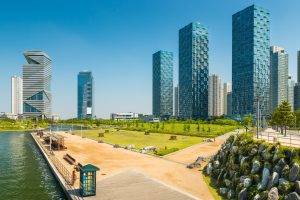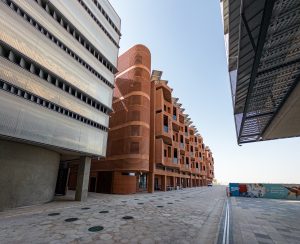In this article Steffan Black, a technology expert at ZenShield, delves into this phenomenon of some Smart City projects turning into virtual ghost towns after failing dramatically within five years of their launch, naming the three smart cities that failed and sifting through the possible reasons behind their downfall.
“Every new technology brings its own set of challenges alongside the opportunities it offers. Planning and managing Smart City projects is no different,” said Black.
Songdo, South Korea

Constructed from scratch on 1,500 acres of reclaimed land, Songdo seemed poised to be a distinguished model for future cities. The city, integrated with cutting-edge technology, boasted efficient waste disposal systems, smart-tech homes and school classrooms connected globally.
Yet, after several years of launch, Songdo remains sparsely populated. The reasons attributed to its failure are many, such as:
- High living costs push away potential residents
- Lack of cultural and social attractions making it unappealing
- A ‘top-down’ approach to planning, ignoring the need for organic growth that happens naturally in cities
“Songdo is a perfect example of putting the cart before the horse,” Steffan Black notes. “Smart City models should cater to actual residents’ needs rather than just integrating top-notch technology.”
Masdar City, United Arab Emirates

Masdar City was conceived as the world’s first carbon-neutral, zero-waste city. This planned city close to Abu Dhabi remained largely a digital ghost town, with a fraction of the promised population.
The reasons included:
- Delays in construction leading to wavering investor interest
- High costs of living and commercial rent deterring potential residents and businesses
- Lack of practicality, with planned features appearing more as a showcase of futuristic concepts rather than meeting actual inhabitation needs
Black said: “Smart Cities, such as Masdar City, should not be just science-fair projects. They need to be practical, affordable and viable for businesses and residents alike.” He asserts that if these cities cannot accommodate the common folk, they risk becoming isolated showcases of advanced technology.
PlanIT Valley, Portugal
It promised a great vision – a novel city combining advanced technology and sustainability in Portugal. However, even after years, PlanIT Valley remains largely undeveloped.
The stalling factors appear to be:
- Inadequate funding; potential investors were scared off due to the economic downturn.
- Fragmented planning and the absence of concrete progress timelines damage credibility.
“Smart City projects are significant investments. They require sound planning, realistic expectations and robust financial backing. These cities are not just about tech, but also about people, economy and sustainability,” said Black.
As shown, ambitious, tech-fueled urban projects may fail without adequate foresight, planning and groundwork. Policymakers, urban developers and tech companies need to learn from these mistakes. The common thread to these failures is to put people – their needs, their financial capacities, their cultural environment – in the center of planning, not technology. Equating smart cities with an abundance of technology is a misconstrued idea.
Smart Cities are about improving citizens’ lives by making services more efficient, environments more sustainable and infrastructures more resilient. This lesson resonates with Black’s final advice, “A successful Smart City is one that begins with the citizens and ends with them. It’s about them. Always should be.”




